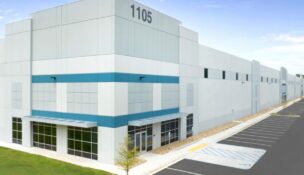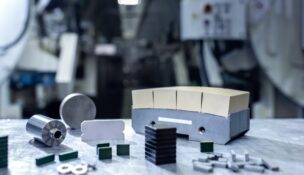Manufacturing scorecard highlights areas for improvement in S.C.
Staff //November 22, 2019//
South Carolina could use some improvement in manufacturing diversification, tax climate and human capital, according to the 2019 Manufacturing Scorecard.
The annual report from the Center for Business and Economic Research at Ball State University’s Miller College of Business measures manufacturing and logistics industry categories such as health, human capital and cost of worker benefits. The report also looks at industry diversification, state-level productivity and innovation, tax climate, expected fiscal liability and global reach.
The report gave South Carolina an overall grade of A for manufacturing but a C-minus for logistics. The state improved from C-minus to C in productivity and innovation and liability while maintaining grades of A in manufacturing and global position and C in benefits costs.
The state fell from B-plus to B in diversification, dropped from C to C-minus in tax climate, and fell from D-minus to F in human capital.
South Carolina was one of five states to receive the A grade in manufacturing industry health and the only Southern state to do so.
Michael Hicks, director of the Center for Business and Economic Research, said South Carolina is one of the few non-legacy manufacturing states to have improved its manufacturing atmosphere in a national economy that has been shedding such jobs for the last 40 years. Legacy states are those which have a history of a manufacturing-based economy, such as those in the Northeast.
“South Carolina is sort of a positive outlier in having a very large share of its economy in manufacturing,” Hicks said. The state’s manufacturing industry grew from modest to “reasonably strong” in the 50 years after World War II, he said, while states in the Northeast had strong manufacturing economies until the middle of the 20th Century. Manufacturing has driven Midwestern economies for nearly 100 years.
The value of human capital
The S.C. Manufacturer’s Alliance reports there are more than 5,000 manufacturing facilities in the state, employing 239,500 people, or 12% of the state’s workforce, at an average salary of $71,123 a year. Contributing to the state’s manufacturing success are business incentives, regulatory environment, property, workers and the long-term costs of doing business, according to the alliance.
“No factor matters more to business than the quality and availability of labor,” the Ball State study said of human capital. “Workers represent the largest single cost of doing business, but more importantly, they are the source of most innovation and process improvements that distinguish successful firms from those that are not successful.”
Hicks said typically manufacturing firms pay better wages, so they can be more selective when it comes to hiring employees.
“It’s partially mitigated by low cost of worker benefits, which are mostly health care costs,” Hicks said. “The state has done fairly well in that. The tax climate’s a little worse than average, but not meaningfully out of line with the national average. And you don’t really have an economy problem with unfunded liability, so if I’m a business coming there, my big worry in South Carolina is, am I going to get the number of people I need who have a 2-year degree or 4-year degree in something that was relevant to manufacturing?”
The report said manufacturing now requires a worker with the ability to understand increasingly complex production methods and applications, often managed by computers. It attributes human capital, particularly relating to education, as the most important factor when companies make decisions about locating manufacturing facilities.
The study used statistics from the National Center for Education Statistics and U.S. Census Bureau for measuring attainment of high school and collegiate-level education, first-year retention rates for adults in community and technical colleges, the number of associates degrees awarded per capita and the share of people enrolled in adult basic education.
Census data shows 87% of South Carolina residents 25 or older have a high school diploma. The state has a 13% high school dropout rate. Of the same age group, 27% have a bachelor’s degree or higher.
Hicks said the demand for a better-educated workforce will eventually limit expansion of manufacturing in South Carolina.
Hicks said the state’s change in the productivity and innovation score (from D in 2017, to F in 2018, to C in 2019), reflects on the role universities have played in private research and development. Focus on manufacturing workforce development by the state’s colleges and universities is starting to pay off, he said, but more needs to be done to make sure the workforce is getting the education it needs to succeed.
“For a small state, that’s unusual that you would have that,” he said of the change in grade. “So universities can’t do it alone. Professors aren’t businessmen and women. But the research you might do in manufacturing new technology, or a chemical application that started that, is usually at the university, and then it’s picked up and run with and improved upon in business.”
Hicks said that nationwide, about half of all factory employees have a college degree, leaving South Carolina behind in that manufacturing measurement.
“Today most new employees in factories tend to be college graduates, particularly in the industries of the future: advanced manufacturing, the high-end automotive work, the medical devices, the drug manufacturing, the avionics — the stuff we thinkthe United States is going to be good at for a long time," he said. "That requires a college degree or at least post-high school work. So if you don’t have a very large population that has those skills, then the number of people that the manufacturing firm can draw upon is smaller and they’re competing more heavily with other opportunities out there.”
To improve logistics, Hicks suggested expanding infrastructure to better access the Port of Charleston and improve connectivity to inland ports. He said investments in infrastructure should be slow and thoughtful and suggested that, just as colleges and universities have focused on preparing graduates for manufacturing jobs, programs should be expanded to prepare students for careers in logistics.
“With really strong universities in South Carolina, that’s a place where the industry could make a difference for itself,” he said.
Despite the poor grades in some categories, Jay Timmons, president and CEO of the National Association of Manufacturers, thinks South Carolina has the vision, motivation and policies to continue the sector’s growth.
He credited former governor Nikki Haley with helping bring international companies such as Boeing, Samsung and Volvo to South Carolina.
“I could show you physical examples of Fortune 500 CEOs whose arms are still in a cast from your former governor Nikki Haley, who twisted those arms constantly at my board meetings,” said Timmons during an October visit to Newberry’s Samsung plant. “She was just an incredible recruiter and she laid out a strategy for improving the business climate for manufacturing, and it’s really paid off.”
Timmons said a strong manufacturing climate benefits a state in several ways.
“Those are the best-paying jobs of any sector, on average,” he said. “And when you have manufacturing jobs in your community, it really increases the tax base, which, of course, means better roads, better schools, better everything.”
This article first appeared in the Nov. 18 print edition of the Columbia Regional Business Report.
r















